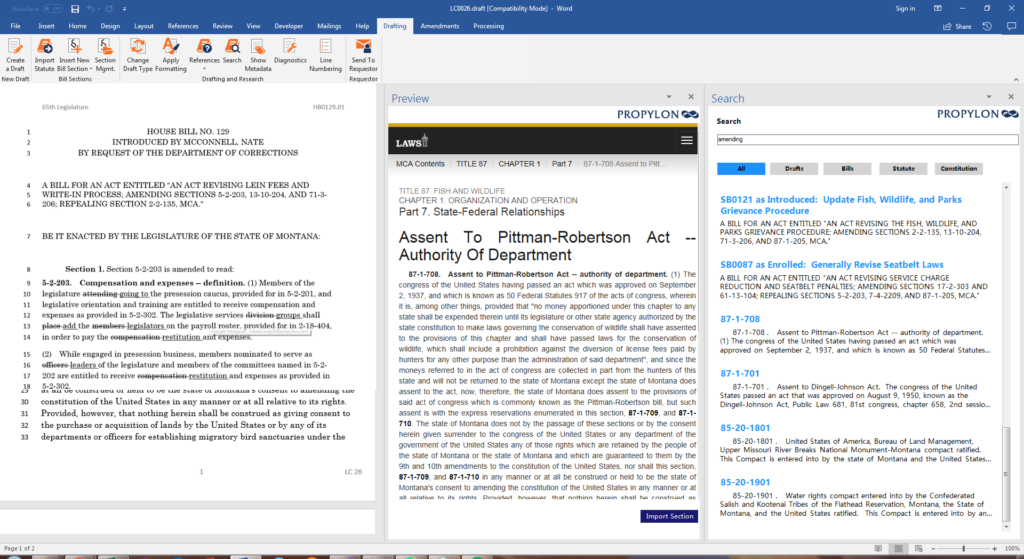Microsoft Visual FoxPro traces its lineage all the way back to Ashton Tate’s DBase II product, incredibly over 40 years ago now. Microsoft ceased providing updates to Visual FoxPro in 2015 and we are now very clearly in the life support years for this product. The availability of skilled FoxPro developers is declining rapidly and although FoxPro continues to work under Windows 10 in the 32-bit compatibility mode, Windows 10 itself will be at end-of-life within the next two years. The future of 32-bit applications on Windows 11, meanwhile, remains to be seen.
Migrating away from legacy tools like Visual FoxPro is critical to ensuring that the work of the legislature continues without interruption into the future. When selecting a new tool, there are important factors to bear in mind.
Today’s drafting attorneys are called away from focusing on their documents by the need to switch screens, for example when checking source material or research.
Choose a tool that’s user-friendly
With almost 900,000 Office 365 company users worldwide, Microsoft Word is the category killer and the most-used word processing program in the legal profession. Drafting attorneys devote substantial effort and skill towards crafting documents. Rather than obfuscate the process by compelling them to use complex tooling, they can stay focused on their bill drafts and work with Microsoft Office-based tools. Indeed, with the right solution, it is still possible to work in Microsoft Word and take advantage of the benefits of XML schemas.

Future-ready and secure
Today’s drafting attorneys are called away from focusing on their documents by the need to switch screens, for example when checking source material or research. Modern drafting solutions like LWB 360 allow easy access to such material, without needing to switch screens. Additionally, drafting attorneys can free themselves up from more manual, time-intensive tasks (like building cross-references) with automation.
With respect to security, implementing best practices from standards such as ISO 27001 is a great long-term strategy. However, this is certainly an area to watch as the landscape evolves and as perpetrators become more sophisticated, requiring another level of expertise that can be difficult to source.
Given the sensitivity of bill drafts and legislation, it is essential to make sure that the solution has robust controls in place to ensure confidentiality between departments.
“We’re living in a time of historic cybersecurity threats … and it’s time for us to have a stronger governance structure; it’s time for us to get more serious about what evidence-based best practices look like.”
Improving the working lives of staff
When it comes to developing new tools, legislatures all have unique processes. As retired executive director at the Montana Legislative Services Division, Susan Fox, put it: “We – legislatures – all do the same thing, right? We all pass laws. But nobody does it the same way. There are many different ways you can do an institutional process.”
Key to respecting this is the methodology implemented. At Propylon, our Output Centric Design Methodology (OCDM) has been designed specifically for legislative projects and is based on industry standards and best practices. This methodology provides a framework for managing the configuration and customization process and provides clear and concise progress tracking and reporting.
OCDM is at the heart of our partnership approach to developing technology solutions in collaboration with legislatures to reap the benefits of positive transformation, improve the working lives of staff and safeguard legislative traditions.
A solution for the next twenty years
Now is the time to start planning a migration from Visual FoxPro. It is possible that a security update for Windows could cause the application to break. Putting in place a new solution starts with ensuring that the new tools can meet the needs of staff now and into the future; it starts with a solution that solves challenges while making sure that the knowledge within the legislature is fully utilized, and paves the way for enhancements to the legislative process. Talk to us about our experience helping states safely move off old technology.

